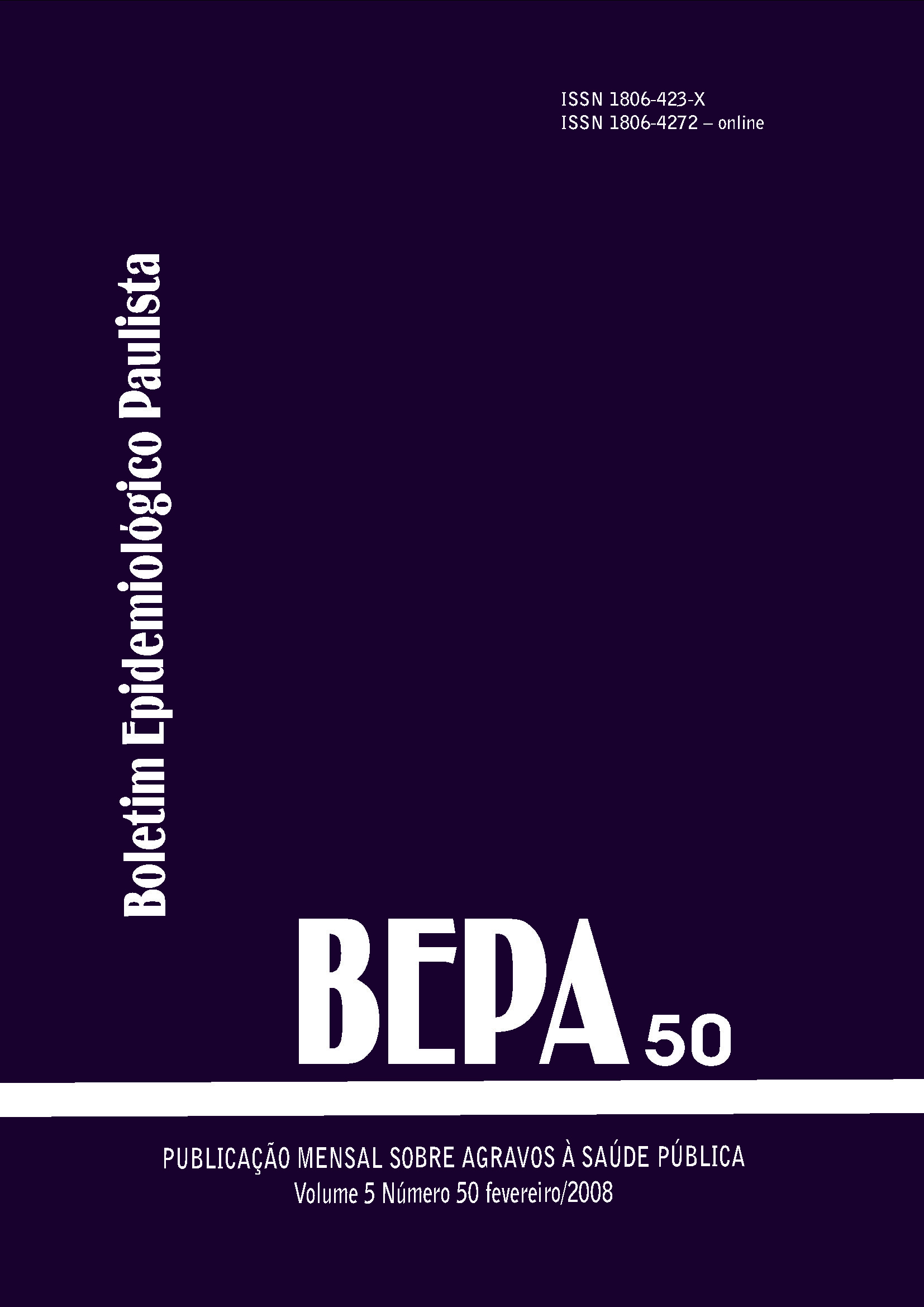Abstract
Foodborne botulism is a potentially lethal neuroparalytic disease caused by the ingestion of neurotoxins present in food contaminated by the bacteria Clostridium botulinum, in generally, associated with homemade vegetables, and canned fruits meats. On August 23, 2007, the Epidemiologic Surveillance department from the city of Santos notified a suspicious botulism case to the Center for Epidemiologic Surveillance, and later, one more case linked to the first, one resident in city of Santos, other in Praia Grande, SP. Botulism diagnosis was done by clinical criteria, i.e., by clinical features and electroneuromyografy compatibles with illness. This report summarizes the finding of the outbreak investigation which linked the disease to the common ingestion of chicken pie and other commercial salt roasted food. Later suspected and notification obstructed the prompt laboratorial specific exams and the administration of therapeutic antitoxin. Educational and sanitary measures were developed to prevent new cases and outbreaks
References
Centro de Vigilância Epidemiológica “Prof. Alexandre Vranjac”. Manual de botulismo – Orientações para profissionais de saúde. São Paulo: Secretaria de Estado da Saúde; 2002.
Cecchini E, Ayala SEG, Coscina Neto AL, Ferrareto AMC. Botulismo. In: Veronesi R, Focaccia R (edi tores) . Tratado de Infectologia. 1ª ed. São Paulo: Atheneu; 1997. p. 565-74.
Abram S. Benenson (editor). Control of communicable diseases manual.16ª ed. Washington: American Public Health Association; 1995.
Borges Filho TS, Santos SJ, Silveira MC, Cardoso P, Perandones CA, Moreno M, Malvezzi F, Lombardi SF, Rowlands REG, Jakabi M, Junqueira DMAG, Bassit NP, Eduardo MBP. Botulismo associado a alimentos comerciais assados doados, município de São Vicente (SP) – Junho de 2007. Bepa. 2007;4(46):1-6. Disponível em: http:// www. c v e . s a u d e . s p . g o v. b r / a g e n c i a / bepa46_botu.htm.
Brasil. Ministério da Saúde. Portaria nº 33, de 14 de julho de 2005. Inclui doenças de notificação compulsória, define agravos de notificação imediata e a relação dos resultados laboratoriais que devem ser notificados pelos Laboratórios de Referência Nacional ou Regional. Diário da União: Brasília;p.111,15 jul. 2005. Seção 1.
Centers for Disease Control and Prevention. Botulism in United States, 1899-1996, handbook for epidemiologists, clinicians and laboratory workers. Atlanta: The Centers; 1998.
Solomon HM, Johnson EA, Bernard DT, Arnon SS; Ferreira JL. Clostridium botulinum and its toxins. In: Downes FP, Ito K. Compendium of Methods for the Microbiological Examination of Foods. 4ª ed. Washington (DC): APHA; 2001.p.317-24.
Secretaria de Vigilância em Saúde. Guia de vigilância epidemiológica. 6ª ed. Brasília: Ministério da Saúde; 2005. p.170-86.
Centro de Vigilância Epidemiológica. Botulismo – Identifique [folheto técnico]. São Paulo: Secretaria de Estado da Saúde; 2002.
Centers for Disease Control and Prevention. Outbreak of botulism type e associated with Eating a Beached Whale, Western Alaska, July 2002. MMWR. 2003;52(2):24-26.
Centers for Disease Control and Prevention. Botulism Outbreak Associated With Fermented Food, Alaska, 2001. MMWR 2001; 50(32):680-2.
Organização Pan-Americana de Saúde. HACCP: instrumento essencial para a inocuidade de alimentos. Buenos Aires, Argentina: Opas/INPPAZ, 2001.
Organização Mundial da Saúde. "Regras de Ouro" da OMS para a preparação higiênica dos alimentos. Genebra: OMS; sem data.

This work is licensed under a Creative Commons Attribution 4.0 International License.
Copyright (c) 2008 Divisão de Doenças de Transmissão Hídrica e Alimentar – DDTHA
